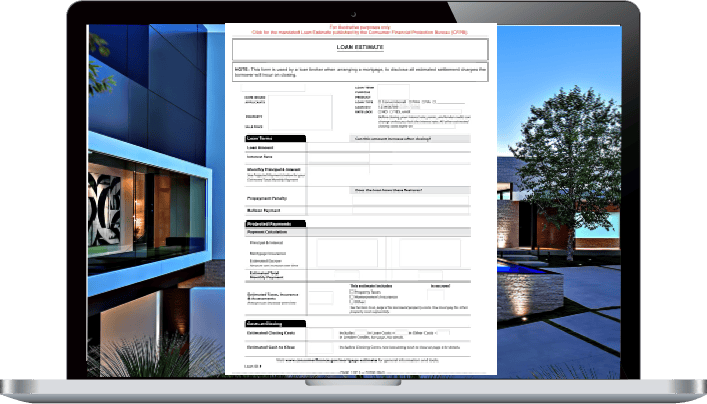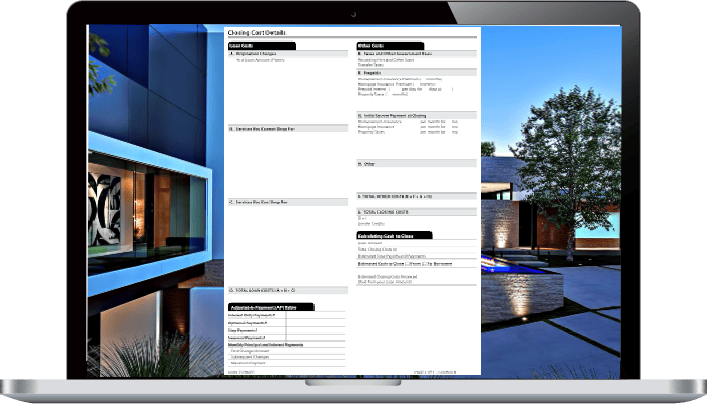|
Understanding the 6 Month SOFR Bank Statement Loan
For self-employed individuals or business owners unable to meet conventional loan requirements, a 6 Month SOFR bank statement loan offers a viable alternative. Tailored as an adjustable-rate mortgage, this loan accommodates those with unconventional income sources.
With a 6 Month SOFR bank statement loan, qualification relies solely on bank statements instead of income verification. Many self-employed individuals and business owners face challenges in qualifying for traditional loans due to business deductions. The loan's interest rate initially begins with a start rate, adjusting every six months based on the 30-day average Secured Overnight Financing Rate (SOFR) index, replacing the London Inter-bank Offer Rate (LIBOR). Fidelity Residential presents a range of financing options, including 6 Month SOFR ARMs, 5/6 ARMs, 7/6 ARMs, and 10/6 ARMs, catering to varied preferences and needs.
While adjustable-rate mortgages offer favorable initial rates, they may adjust according to market conditions after the fixed period. However, they facilitate the purchase of higher-value homes by reducing monthly payments. Despite potential interest rate adjustments based on the SOFR index, refinancing remains an option.
Bank Statement Loan Eligibility Criteria
To qualify for a bank statement loan, you must meet specific requirements:
- Self-employment or business ownership spanning at least two years (one year with two years of relevant experience)
- Minimum down payment ranging from 10% to 25%, depending on credit score
- PITI reserves equivalent to three to twelve months' worth of payments, depending on the loan amount
- Credit score of 620 or above
- Loan amounts ranging from $100,000 to $5,000,000
Understanding Bank Statement Loan Eligibility
Bank statement loan eligibility involves evaluating total deposits minus disallowed deposits, divided by the number of statements (12 or 24 months). Alternatively, a hybrid approach incorporating W2 and tax return income from a co-borrower alongside bank statement income from the borrower may be considered for qualification. Disallowed deposits typically include inter-account transfers and large cash deposits, warranting explanation letters.
Special Considerations for Bank Statement Loans
- Multiple bank accounts are permissible for statement submission, but personal and business accounts cannot be combined.
- Transfers from business to personal accounts are acceptable.
- Commingling of funds is prohibited.
- Foreign bank statements and assets may be considered, provided they are translated into English.
- Personal bank statement deposits qualify at 100%, while business bank statement deposits usually qualify at 50%, though this percentage may vary based on business type.
Calculating Bank Statement Loans
Bank statement loans assess income based on total bank account deposits over 12 or 24 months. Lenders calculate qualified income by averaging monthly deposits, facilitating eligibility for self-employed individuals, business owners, entrepreneurs, and investors with non-traditional income sources. The loan application process involves submitting bank statements through our digital mortgage software or manually, followed by a manual underwriting process, which typically takes 21 to 60 days for processing.
Bank Statement Loan Success Story
For individuals who are self-employed, documenting income can often pose a challenge due to various tax write-offs. This can complicate the process of securing a home loan through traditional means. However, bank statement programs offer an alternative route for mortgage lenders to extend loans, particularly beneficial for self-employed individuals, independent contractors, and those with seasonal income. Despite facing hurdles with tax returns, these potential homebuyers often possess qualifications surpassing those of salaried employees. Meet Javier, a prime example of how a bank statement loan can transform the homeownership journey for self-employed individuals. Javier, a successful self-employed electrician, maintained a steady income each month. However, deductions for business expenses limited his reported income, making it challenging to qualify for a conventional loan. Fortunately, Javier discovered a bank statement lending program, bypassing the need to provide tax returns. This allowed him to showcase his true income without the hindrance of business write-offs. Reviewing Javier's bank statements spanning 12 months, his lender found consistent monthly deposits, exemplified by the following: • January: $5,250 • February: $4,200 • March: $3,500 • April: $8,400 • May: $9,500 • June: $5,300 With an average monthly income of approximately $6,000 over six months, Javier successfully qualified for a bank statement loan. Despite slightly higher down payment and interest rate requirements compared to traditional loans, Javier embraced the opportunity to purchase a home. Moreover, he remained optimistic about the potential to refinance with a conventional loan in the future, leveraging an anticipated increase in income to secure more favorable terms.
Exploring Bank Statement Loans
Bank statement loans offer a flexible financing solution for borrowers with unconventional income streams. Whether you're self-employed, a freelancer, or an entrepreneur, these loans provide accessibility to homeownership by considering a broader range of income sources. Fidelity Residential stands as a premier bank statement loan lender, committed to offering personalized solutions and guiding borrowers through the lending process. Explore your mortgage options with us today.
Bank Statement Loans FAQ
Can I qualify for a mortgage using only bank statements?
Yes, a bank statement loan enables mortgage qualification solely based on bank statements, bypassing traditional income verification methods. Typically, lenders request 12 or 24 months' worth of statements, though shorter periods may suffice. Your credit score is also factored into the loan terms.
How can I obtain bank statements for my loan application?
Yes, you can obtain a bank statement mortgage loan without providing pay stubs or tax returns. Simply provide bank statements from your business or personal accounts. Downloading them from your bank's online portal is the easiest method. If unavailable online, request them to be mailed.
How do bank statement loans function?
Bank statement loans replace traditional income verification with bank statements, instead of W2s or tax returns. While typically requiring 12 or 24 months' worth of statements, some approvals may consider only two months. Loan officers manually review the statements and verify with the bank.
Can you refinance with a bank statement loan?
Yes, refinancing with a cash-out option using bank statements is possible. This allows leveraging home equity for cash, often up to 80% of the property's value, useful for debt settlement or major expenses.
Can I get a bank statement mortgage for a second home?
Indeed, a bank statement loan isn't limited to primary residences. If traditional income verification doesn't reflect your financial situation accurately, a bank statement mortgage can secure a second home purchase by demonstrating repayment ability through bank statements.
What do mortgage lenders look for on bank statements?
Lenders review bank statements for:
• Positive balance
• Minimal overdrafts
• Regular income deposits
• Adequate funds for at least 10% down payment
• Covering several months' mortgage payments and closing costs
• Seasoned income deposits
How many months' worth of bank statements do I need for a loan?
For most personal and business bank statement loans, the last 12 or 24 months' statements are required.
What credit score do I need for a bank statement loan?
A credit score of 620 or higher is required for bank statement loans with Fidelity Residential.
Can non-self-employed individuals qualify for a bank statement loan?
Yes, retirees and various self-employed individuals, including business owners, freelancers, gig economy workers, and realtors, can qualify for bank statement loans.
How challenging is it to get a bank statement loan?
Finding a reliable lender offering bank statement loans can be challenging. However, as long as applicants can prove income through bank statements and maintain a decent credit score, qualification shouldn't be overly difficult.
What is the minimum down payment on a bank statement loan?
Down payment requirements vary based on credit score, ranging from 10% for higher scores to 25% for lower scores.
Can you get a bank statement loan if you've filed for bankruptcy?
Yes, with a waiting period of at least two years after bankruptcy, though some exceptions may apply.
Are bank statement loans more expensive?
Bank statement loans typically come with higher interest rates and down payment requirements due to higher risk for lenders.
Are bank statement loans riskier than other mortgage options?
Yes, they're considered riskier, both for lenders and borrowers, due to alternative income verification methods and lack of backing from Fannie Mae or Freddie Mac.
Are there other types of loans that require bank statements?
Bank statements can be used to prove income for various non-QM loans, such as jumbo loans and asset-based loans.
Are there other types of home loans for self-employed borrowers?
Yes, including asset-based loans, DSCR loans, VA loans, FHA loans, jumbo loans, and bank statement home equity loans.
Fidelity Residential offers a range of self-employed home loan products, including personal and business bank statement loans, tailored to diverse employment and income circumstances.
|





